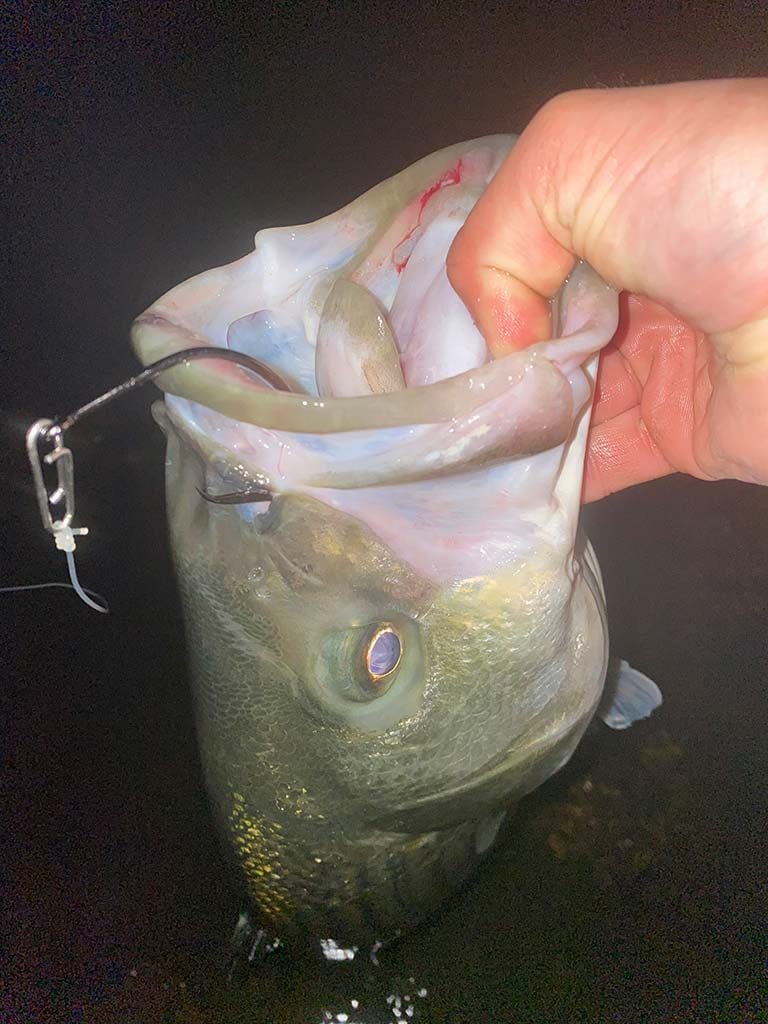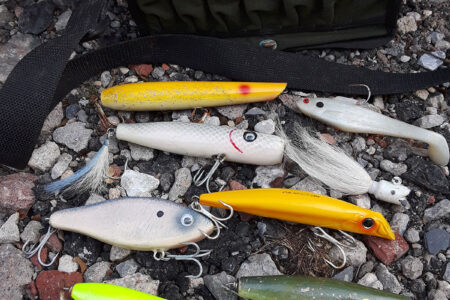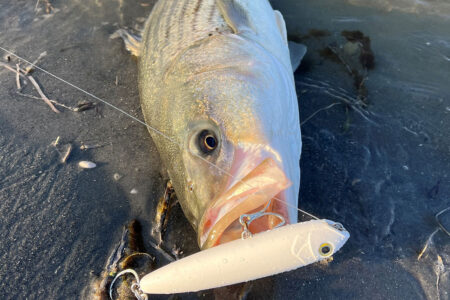Bait and lures are both responsible for tremendous catches, but how do you make the right choice?
Most dedicated Northeast surfcasters, who live and breathe striped bass fishing, have a tendency to get very particular about everything from rod and reel choice, leader selection, tide selection, etc. Each plays a significant role in finding and catching fish. The demand for artificial lures and plugs among surfcasters is at an all-time high, but it’s essential to recognize that there is still a time and place to fish with good, old-fashioned bait in the surf. However, to keep a consistent success rate, it’s equally crucial for the angler who prefers bait to recognize the proper occasion to present a plug or plastic. Based on timing, location, water, and weather conditions, one can effectively plan by preparing all gear in advance and making firsthand observations before making a cast.

The fall season in the Northeast yields some incredible surf fishing opportunities, from the rugged and rocky New England coastline to the sandy shores of Long Island and New Jersey. Generally, there are two main areas of focus for anglers fishing from the sand: jetties and open beaches. Both of these options present opportunities for fish, but they call for different equipment and setups. If fishing near a rocky jetty with current, it makes logical sense to avoid bait. Unless you’re using a giant sinker to hold your bait in one place, it is far more likely to be tossed around in the heavy current and potentially snag on rocky structure. This leads to losing more rigs and spending less time fishing. Slack tides are a different story, and during this period, you can effectively present bait, but remember, your window is limited during slack. Most of the time, the rocky environment of a jetty makes utilizing suspending, diving plugs, tins, bucktails, and rubber shads a much more realistic option.
About a half-mile down the beach, the fishing and surf conditions could be entirely different. If fishing an open beach, fishing bait on the bottom is an excellent choice, regardless of tide, with far less likelihood of snagging rocks or other solid structures. The open surf is the perfect place to soak a bunker chunk, fresh clam, or ball of bloodworms. And the movement of the surf allows scent to do a majority of the work.
Anglers should never overlook the application of artificial lures in the open surf either, as they often perform just as well or better than bait depending on how the fish are feeding or surf conditions on a particular night. So how do you decide whether to fish with bait or lures on a given day? It’s relatively simple. Allow the conditions to make that choice for you; if the waves or current are going to make it tough to fish with bait, go with plugs and lures. When the conditions are calm, bait may be a better choice.
It should be noted that all Northeast anglers targeting striped bass with bait, live or dead, are required to use inline (non-offset) circle hooks. In 2020, the Atlantic States Marine Fishery Commission (ASMFC) put this regulation into law to reduce striped bass release mortality, meaning that an estimated 90% of recreational anglers release striped bass, due to size/bag limits, or just personal preference. Inline circle hooks are designed to reduce the likelihood of ‘gut hooking’ a fish, the hooks are designed to pull out of throat and find purchase in the lip of the fish.
It helps to fish with a plan, and despite the excitement, avoid jumping directly into the water to wet a line and take a few minutes to study your environment. What are the winds like? Is there any bait in the area, and if so: are you fishing with similar bait, or would an artificial application be ideal for testing in these conditions? If the conditions are consistent with what you planned on, execute your plan, but be ready to change up if the fish don’t respond.
Fishing the surf is a constant game of planning, adjusting, and executing. Go with your gut, and most importantly, pay attention to all the extraneous factors that will play a part in catching your target fish.




